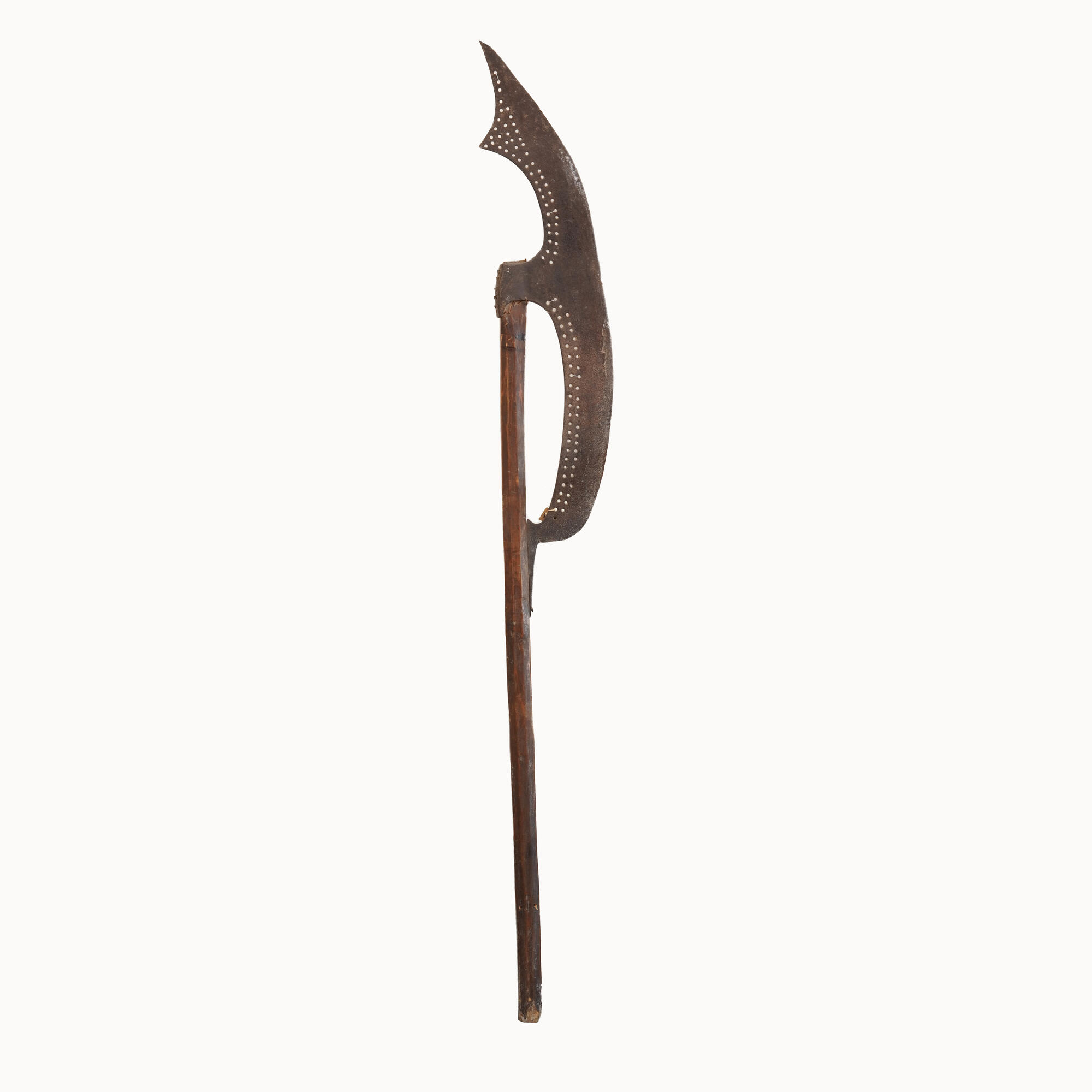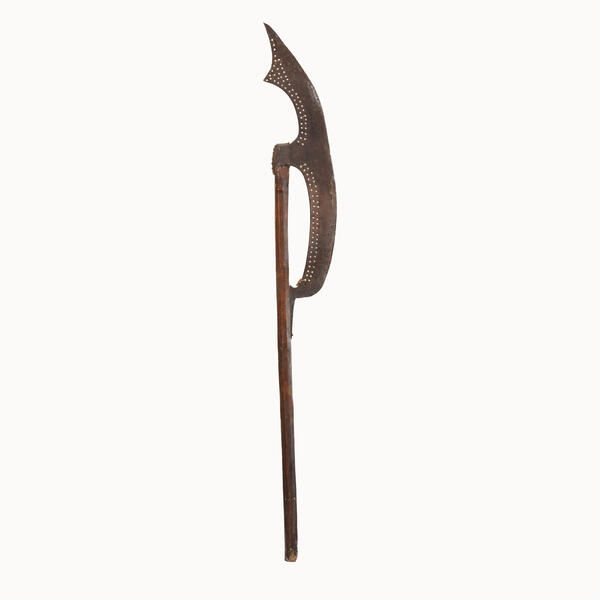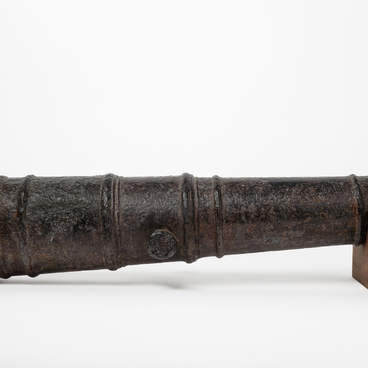A battle axe is an ancient and powerful weapon. The first axe in the form of a sharpened stone attached to a handle appeared tens of thousands of years ago. If sharpened stones without a handle are taken into account, the age of the axe is estimated at hundreds of thousands of years. Over time, new types appeared, one of which is the bardiche. This type of axe appeared in Europe and the Middle East during the Middle Ages. It became most popular in 16th–17th centuries and became a distinctive weapon of the Russian streltsy (riflemen) units. Most researchers agree that the name of the weapon appeared in Russians from the Polish word bardysz, berdysz, and it, in turn, — from the Middle Latin barducium.
The Kolomna Local History Museum displays a bardiche with a broad crescent-shaped blade and a long handle. It was used by Russian streltsy (riflemen) in the 16th–17th centuries. It is believed to be mentioned during the reign of Ivan the Terrible. During his reign the Livonian War began, and the tsar carried out a serious military reform, as a result of which the first regular army was formed in Muscovy, the Streltsy regiments. The streltsy regiments shot to kill, then the infantrymen fought with a bardiche. No extra expenses were needed to produce this type of weapon, iron or steel was used for its production. The blade was metal, it had a point, a blade, a ricasso, a butt and a fastening. The spear staff (or shaft) was made of wood and had a round, oval or faceted cross-section. In 1656 a decree was issued to produce bardiches in accordance with the established design, but in fact the decree could not be followed: it took a number of blacksmiths to manufacture the weapon. Later, factories were established to produce bardiches, where it was possible to control their standardization.
The shaft of a combat bardiche was made 142 cm, the same weapon for ceremonies had the length of 220 cm. A combat poleaxe weighed about 1,5 kilos and a ceremonial one — up to 3 kilos. Metal blades of the weapons designed for special occasions or to equip the palace guards stood out in their beautiful design and quality of decoration. They were covered with a carved pattern, dots, circles, images of leaves and flowers, dragons and chimeras fighting unicorns.
With the help of bardiches our ancestors fought off raids of janissaries, onslaught of Tatar cavalry and attacks of Polish hussars. They were used by Russian army until Peter the Great came to power: he carried out the reform, as a result of which bardiche went out of use.
The Kolomna Local History Museum displays a bardiche with a broad crescent-shaped blade and a long handle. It was used by Russian streltsy (riflemen) in the 16th–17th centuries. It is believed to be mentioned during the reign of Ivan the Terrible. During his reign the Livonian War began, and the tsar carried out a serious military reform, as a result of which the first regular army was formed in Muscovy, the Streltsy regiments. The streltsy regiments shot to kill, then the infantrymen fought with a bardiche. No extra expenses were needed to produce this type of weapon, iron or steel was used for its production. The blade was metal, it had a point, a blade, a ricasso, a butt and a fastening. The spear staff (or shaft) was made of wood and had a round, oval or faceted cross-section. In 1656 a decree was issued to produce bardiches in accordance with the established design, but in fact the decree could not be followed: it took a number of blacksmiths to manufacture the weapon. Later, factories were established to produce bardiches, where it was possible to control their standardization.
The shaft of a combat bardiche was made 142 cm, the same weapon for ceremonies had the length of 220 cm. A combat poleaxe weighed about 1,5 kilos and a ceremonial one — up to 3 kilos. Metal blades of the weapons designed for special occasions or to equip the palace guards stood out in their beautiful design and quality of decoration. They were covered with a carved pattern, dots, circles, images of leaves and flowers, dragons and chimeras fighting unicorns.
With the help of bardiches our ancestors fought off raids of janissaries, onslaught of Tatar cavalry and attacks of Polish hussars. They were used by Russian army until Peter the Great came to power: he carried out the reform, as a result of which bardiche went out of use.



